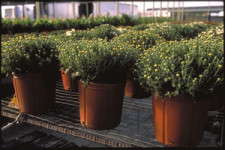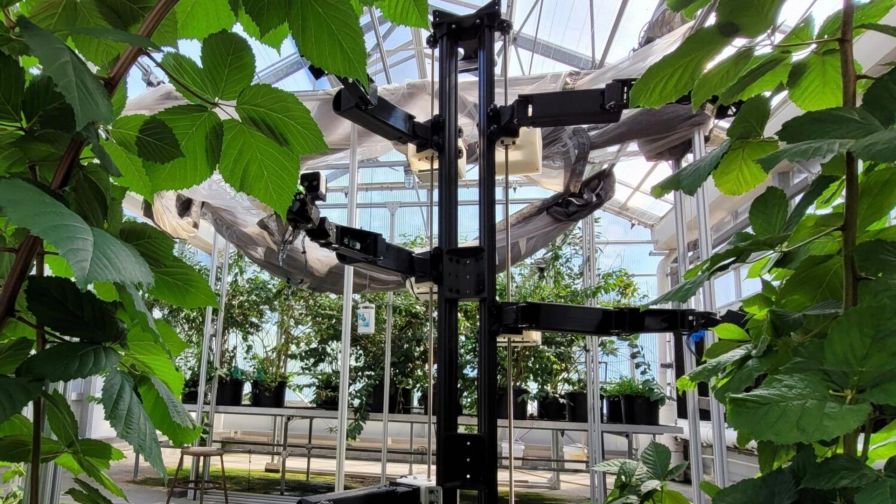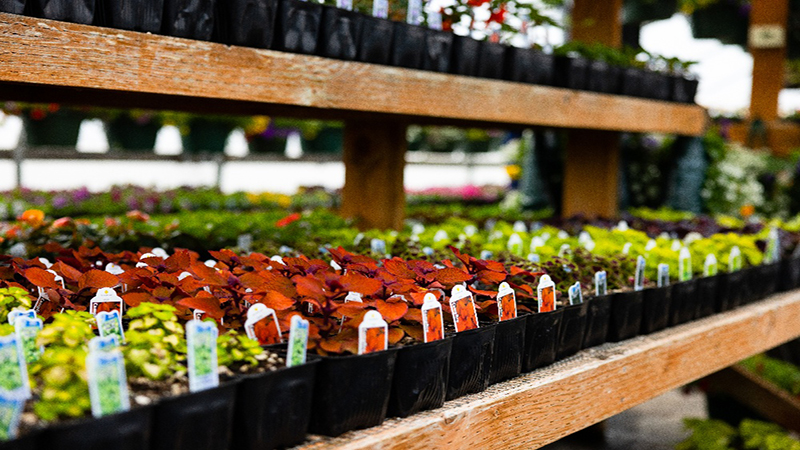Get Ready For Runoff Regulation

You can ignore them, but they will not go away, and soon, denial will not be an option. Water regulations are a thing of the near future for greenhouse growers, with some states — California and Florida — already enforcing strict rules.
The horticulture and floriculture industries are working together with the U.S. Environmental Protection Agency (EPA) toward regulating the amount of nitrates that are used in crop production with the goal of reducing runoff into groundwater. This is why it is ever-important for growers to start practicing fertilizer, water and runoff management now, before the impending regulations and penalties become a reality. With time to adapt growing operations before runoff management evolves from practice into law, becoming good stewards of the environment is a win-win situation, according to Ed Rosenthal, president and CEO of Florikan. Rosenthal has been working with growers for more than 20 years to advance nutrition programs that are environmentally sound.
“Dr. Joanne Burkholder at North Carolina State University conducted a study on nutrients and their effects on harmful algae bloom and her research found that phosphate is directly implicated in algae bloom, which is killing fish in inland estuaries. We’re not talking cursory or maybe, we’re talking definitively,” he emphasizes. “Now it becomes a matter of choice. When do you stop using these nutrients the way you have been? Do you wait for the law or do you do the right thing and make the adjustment?”
Rosenthal and his fertilizer technology team advocate and teach that switching from water soluble or traditional granular fertilizers to controlled release fertilizers (CRFs) is a proactive means for carefully managing nutrition programs, starting with the reduction of inputs and ending with the reduction of run-off or leaching.
“If you want to be a grower of the future, figure out your ppm and start using fertilizer that will not leach as readily,” he says. “I don’t see any other way. You can put in 100 percent retention, but is that affordable for most growers? I don’t think it is.”
Florikan, based in Sarasota, Fla., specializes in helping greenhouse and nursery growers affect beneficial changes in fertilization and production. The company received a Gulf Guardian Award from the EPA in 2005 for its Staged Nutrient Release (SNR) fertilizer products, which enable growers to reduce fertilizer inputs and runoff. Florikan also received ANLA’s prestigious Allied Associate of the Year award in 2004.
“Winning the EPA award and taking environmental stewardship seriously, they mean the same thing to us,” Rosenthal says. “For us, the bottom line is if our growers are successful, we are successful. It is the industry growers deserving these awards, not merely us.”
The Stakes Are High
Phosphorus and nitrogen are on the list of plant sustenance targeted for reduced or controlled usage. While it will be some time before the practice becomes law in some states, perhaps not for another year or more, Rosenthal suggests the regulations will likely start with the turf industry, quickly followed by nurseries and greenhouses. The regulations will be based on established plantings, of which, naturally, turf has the widest reach.
While the EPA likely will want to enforce zero phosphate in fertilizer formulas, such as 15-0-15, the industry will lobby for something closer to 15-5-15. But in general, whatever compromise the turf industry is able to reach with EPA is one that greenhouse growers will have to live with, Rosenthal surmises.
“Regulatory officials are starting with phosphorus, then going to nitrogen and other nutrients. But we all have to pay attention to phosphates first. We should be reducing the phosphates as best we can in our applications right now, to the lowest possible levels,” cautions Rosenthal.
Greenhouse use of phosphates is potentially even more critical than in turf. Most greenhouses have raised benches and with hanging baskets above them, there is a tremendous amount of leaching with liquid fertilizer. “For those growers using liquid feeds, a good practice is evaluating using something like 8-0-8 or even less,” explains Rosenthal. Florikan created Staged Nutrient Release (SNR), which is coated phosphate fertilizer that releases phosphates over 90 days with minimal leaching, putting and keeping fertilizer into the pot. “This timeframe is probably the way the industry should begin testing phosphate CRF application.”
Success With CRFs
Florikan’s fertilizer technology team promotes best management practices (BMPs) and is proactively working with a number of its grower customers to find runoff management solutions. These include taking analytical soil and leaf tests, reducing fertilizer applications, using controlled release fertilizers and keeping a 10- to 15-foot border as a mitigation zone from any water body.
Florikan provides soil and leaf testing at its own expense to help growers work toward solutions. “It all starts with partnership between fertilizer companies and growers because growers often need the tools or resources fertilizer companies can provide,” he says.
Soil and leaf tests can ultimately equate to efficient fertilizer usage and help growers know what they need to apply and when. Highland Greenhouses, Venus, Fla., is a very progressive, state-of-the-art operation that utilizes a number of methods to control runoff. The operation has minimized liquid feed and augmented controlled release, built retention ponds around its property and installed concrete aisles in greenhouses. Highland uses low-phosphate SNR fertilizers, as phosphorus is often the highest level of nutrient runoff for greenhouses.
Jerry Kirkland, owner of Jerry’s Gardenias in Apopka, Fla., has also significantly reduced runoff at his woody ornamentals operation by switching to CRFs. “Several years ago, I switched from using a 9-3-6 liquid fertilizer to using Nutricote from Florikan, reducing my liquid feed and my runoff by at least 80 percent, maybe as much as 90 percent,” Kirkland says.
He adds he has found the most effective approach to starting the practice is to be open-minded to using CRFs, as they do not leach nitrates into the water supply. “By using a CRF, I am able to make sure the fertilizer stays in the growing pot instead of having it wash into the soil and waterways,” he says. “It just makes sense. CRFs allow for more control of how the plants receive their nutrients, which ultimately helps us refrain from over-or under-feeding them — and at the same time, we are addressing best management practices.”
New Formulations
By working with Harman Gilbert, one of Florikan’s technical experts, a few growers are beginning to trial a new fertilizer formulation that not only will help reduce runoff but also solves a production problem. According to Rosenthal, these operations have found that the ammonium phosphate in their liquid feed fertilizers stunt flowering and promote stretch. To provide these greenhouses a fertilizer with zero phosphates and, more importantly, zero ammonia in the form of nitrogen, Gilbert came up with a CRF calcium nitrate formulation in a delayed release.
“This could be the most significant solution-product to growers wanting to get away from problematic ammonium phosphates,” Rosenthal says. “Calcium, which is really important in stem strength, is essential; yet, you have to apply it at just the right time.”
However, while growers can learn from the success these operations have had, they must use their own data and environmental conditions to create a custom program that works, Rosenthal says. “There is no way they can entirely depend on research from County Extension Services or another nursery,” he says. “Their water and timing are going to be different, and they have to do it on their own property, under their own conditions — it’s critical. Convert one greenhouse at a time.”









